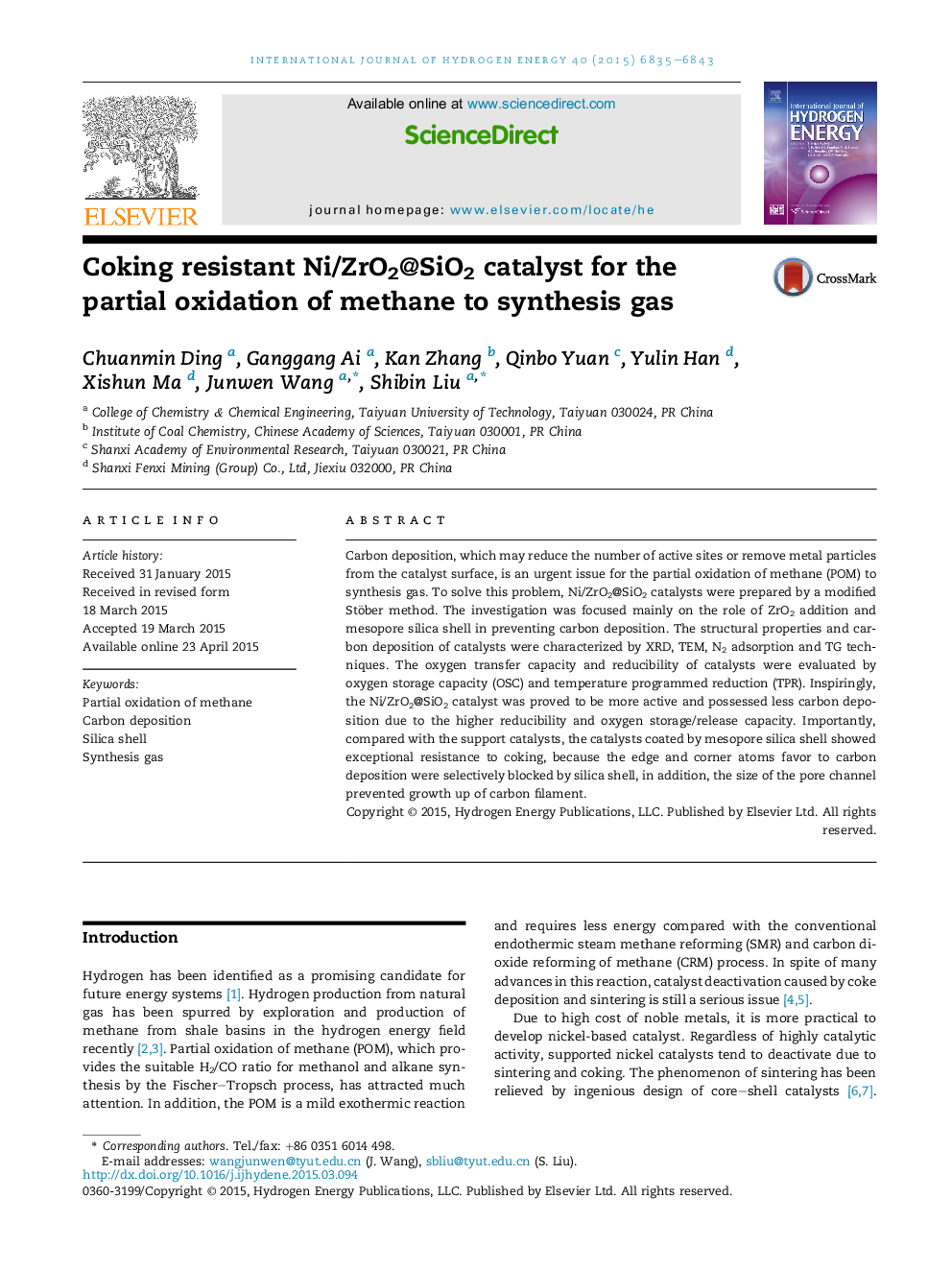| Article ID | Journal | Published Year | Pages | File Type |
|---|---|---|---|---|
| 1271195 | International Journal of Hydrogen Energy | 2015 | 9 Pages |
•The Ni/ZrO2@SiO2 catalysts with mesoporous silica shell were synthesized.•The formation routes of carbon deposition were discussed in detail.•The Ni/ZrO2@SiO2 catalyst showed effective resistance to carbon deposition.•Silica shell inhibited coke by blocking selectively the edge and corner atoms.
Carbon deposition, which may reduce the number of active sites or remove metal particles from the catalyst surface, is an urgent issue for the partial oxidation of methane (POM) to synthesis gas. To solve this problem, Ni/ZrO2@SiO2 catalysts were prepared by a modified Stöber method. The investigation was focused mainly on the role of ZrO2 addition and mesopore silica shell in preventing carbon deposition. The structural properties and carbon deposition of catalysts were characterized by XRD, TEM, N2 adsorption and TG techniques. The oxygen transfer capacity and reducibility of catalysts were evaluated by oxygen storage capacity (OSC) and temperature programmed reduction (TPR). Inspiringly, the Ni/ZrO2@SiO2 catalyst was proved to be more active and possessed less carbon deposition due to the higher reducibility and oxygen storage/release capacity. Importantly, compared with the support catalysts, the catalysts coated by mesopore silica shell showed exceptional resistance to coking, because the edge and corner atoms favor to carbon deposition were selectively blocked by silica shell, in addition, the size of the pore channel prevented growth up of carbon filament.
Graphical abstractThe silica shell inhibited coking by blocking selectively the edge and corner atoms.Figure optionsDownload full-size imageDownload as PowerPoint slide
